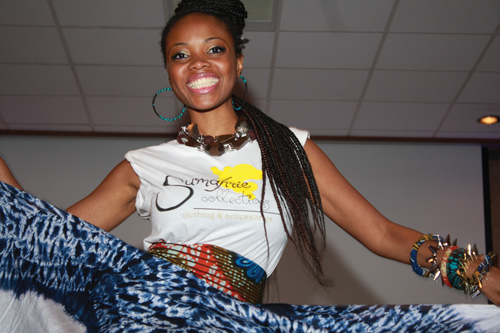By Olufemi Saliu, M.D.
I changed my diet: ate plenty of vegetables, a minimum of four fruits, and a handful of raw cashew nuts, a table spoon of ground flaxseeds a day, and moderate amount of grains. I lost weight but my belly fat was persistent. One day I decided to let go of bagel-and the belly fat melted away.
That was the situation of things until last summer when I stumbled on a Registered nurse in my hospital reading a very fascinating book: Wheat Belly, by William Davis, M.D. In addition to giving me an insight into why I lost my belly fat, it threw light on the hazards of modern day wheat.
“If God did not want us to eat wheat, He wouldn’t have created it,” remarked a close relative during a visit from Nigeria, after I told him about the book I just ordered from Amazon.com that could turn what I’d told him about wheat upside down: whole wheat bread should be preferred because of the intact fibers that slow down its rate of absorption thereby mitigating against a spike in blood glucose. My brother was right: the wheat created by God was meant for human consumption. However, the food scientists have-to increase yield, and cut the cost of production-genetically transformed the original wheat.
This modern day wheat is fraught with a number of health hazards. The key to the hazards of wheat is in how efficiently it increases the blood sugar: it’s amazing to know that two slices of whole wheat bread increase blood sugar more than two tablespoons of pure sugar. It is the concept of this dynamics that I’ll try to elucidate in this article.
The predominant carbohydrate in wheat, amylopectin A is so easily digested in the gastrointestinal that its product, glucose is rapidly absorbed. On the other hand, the main carbohydrate in legumes (beans), amylopectin C is so resistant to digestion that it’s passed on to the bacteria in the colon for digestion. The bacteria break it down to nitrogen and hydrogen, not glucose. So wheat increases blood glucose; beans increase gas, and bulk in your colon. Persistently high blood sugar level may be compared to a car going at 150 MPH where the speed limit is 45 MPH. Cops are called in to maintain the order. In the blood, it is insulin. It drives the glucose into the cells. If you had your breakfast at 7am, by 9am the blood sugar would be so low that mental fatigue, hunger, and craving would set in. You’d be looking for donuts, bagels, coffee, or whatever you can find to eat. The two-hour cycle of high and low blood sugar can go on all day long. Eventually, the pancreas cannot meet the demand for insulin. Diabetes sets in.
During the cyclic activities of insulin, the sugar driven into the cells is converted to fat in the belly, and other parts of the body. That is the foundation of development of high cholesterol, obesity, coronary artery disease, heat attacks, and stroke. The belly fat is unique in the sense that it secretes estrogen, and inflammatory chemicals. The estrogen may cause breast development in obese males.
The inflammatory hormones are partly responsible for the numerous chronic diseases in obese people. A good example is arthritis. In addition to carbohydrate, wheat has protein. Gluten, the predominant protein in wheat may cause celiac disease in some people by provoking a unique immune response that inflames the small intestine, manifesting as abdominal cramps and diarrhea. This condition is treated by total elimination of gluten containing food: wheat products. “When I gave up bread for a few days, I was tired, cranky, and moody,” said a friend. “I’ll rather cut it down slowly,” she went on. Her friend at work told me she couldn’t stand her mood in those few days. “I’ll do everything except quit my evening bread,” remarked a relative, when I was in Nigeria last April. He habitually washed down a couple of slices of bread with cocoa drink before going to bed. “I’ve personally witnessed hundreds of people report extreme fatigue, mental fog, irritability, inability to function at work or school, even depression in the first several days to weeks after eliminating wheat” said Dr. Davis in the book, wheat belly. “Complete relief is achieved by a bagel or cupcake” he concluded. I think most people are addicted to bread, and wheat products. Gluteomorphin, a polypeptide isolated from gluten-from wheat-was shown by NIH scientists, in the brains of laboratory animals, to bind to the same receptor as morphine-and its effect is reversible with naloxone, the antidote to morphine. So I’m not surprised some people exhibit addiction, and withdrawal symptoms in relation to wheat products. I got my wife, and my sister, Joke to give up bread.
My relative in Nigeria has given up eating bread prior going to bed. After she stopped eating bread for weeks, my sister took a bite of bagel in her office in New Jersey. She went on to develop abdominal cramps. Joke was so sick that she said: I’ll never eat bread again. Some people develop such symptoms if they go back to eating bread, and wheat products. I didn’t have any cramps when I ate a little piece of cake on my son’s birthday. You might not be so lucky. My dear readers, if you are very serious about your health, I’ve got four words for you: say no to bread. By bread I mean everything made from wheat-white bread, whole wheat bread, bagels, croissants, sandwich, multigrain bread, cake, muffin, waffle, pancake, toast, cereal, donuts, cookies, pizza, and wheat pasta.
The general rule is before you eat anything, read the label; if it contains wheat, it’s not meant for you. “What then can we eat?” is the commonest question I get from friends, and relatives. You may eat anything but wheat: . Plenty of vegetables (variety) . Moderate amount of fruits (variety) . Moderate amount of whole grains such as oatmeal, quinoa, and brown rice. These grains are also available in flour form. . Legumes such as beans . Raw nuts such as walnut, cashew, and almonds .
Seeds such as flax seeds, pumpkin seeds, and chia seeds. . Fish, chicken, lean meet, and eggs. . Drink water but avoid soda, and malt drinks served at Nigerian parties (made from wheat). I habitually begin my day-by 6am- with a plate of salad made with kale (2oz), broccoli (5oz), bell peppers (6oz), and tomato (5oz); a cup of cooked oatmeal mixed with a table spoon of ground flaxseed; a handful of mixed raw nuts: cashew, walnut, and almonds; one banana-and a glass of water. A similar plate of salad is usually a part of my lunch, and dinner as well. In about a year on any-food-but-wheat diet, my cholesterol dropped from by 100 points to 130.
I don’t get tired in the mornings anymore. I’ve not had coffee in over fifteen months. My joints are strong, and mobile. You too may say no to bread, and construct your own any-food-but-wheat diet. Try it for six weeks, and send an email about your experience to mail@lifeandtimesmagazine.com. If you’re already on medications, you may need monitoring-and need for medications might change. Don’t be too far away from your physician.
Finally, do not take my word for it. Get your own copy of the book: Wheat Belly, by Dr. William Davis. You would never see food the same way again.
_____________________________________
Read in the Life and Times 2013 Spring Edition
































